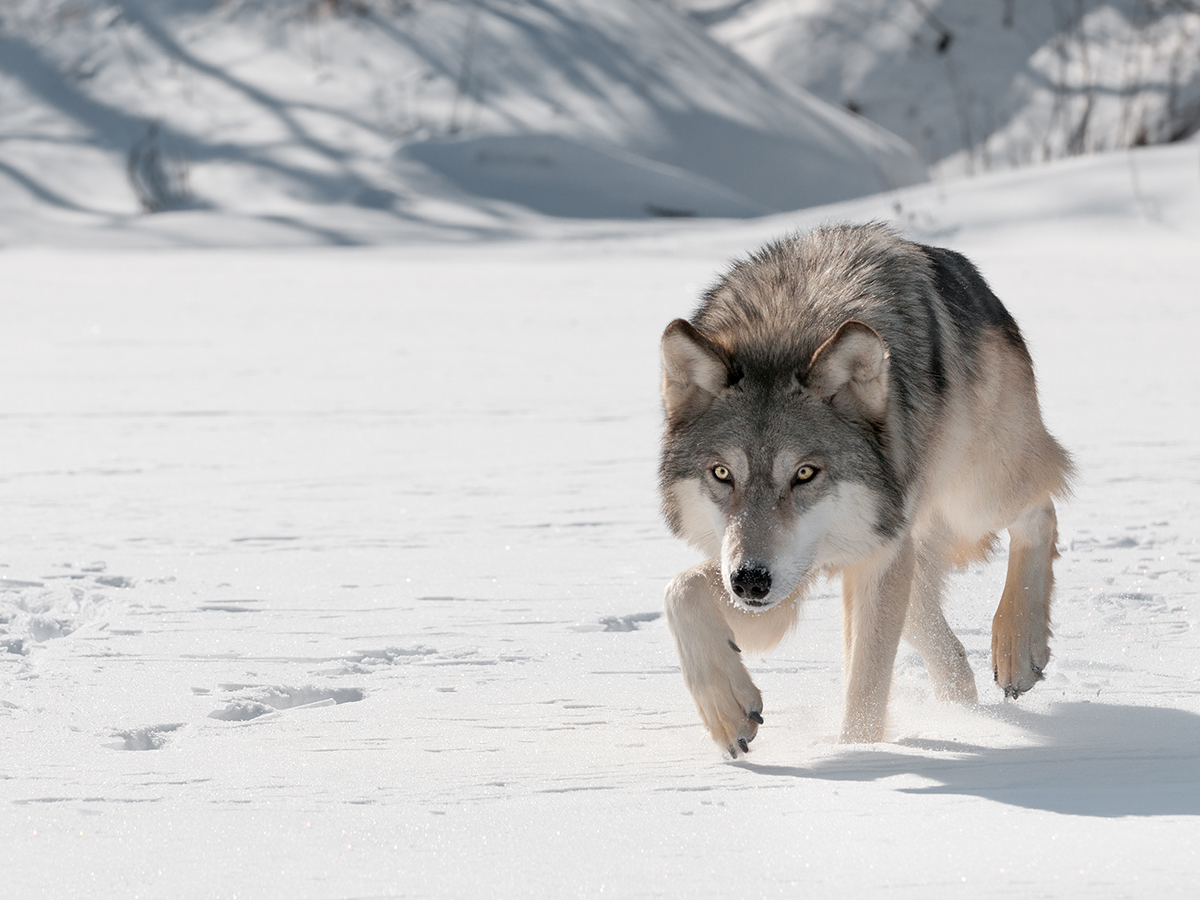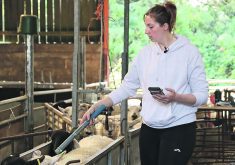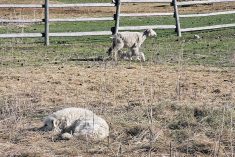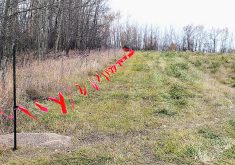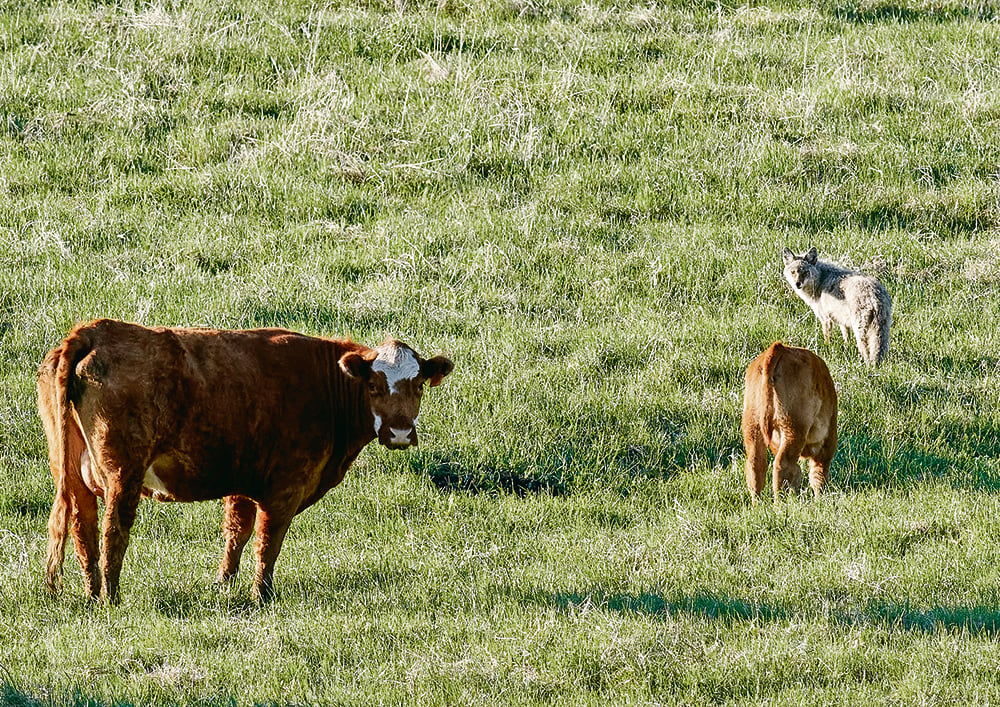Glacier FarmMedia – Manitoba Beef Producers says it is cautiously optimistic about addressing ongoing issues with wolf predation, although some of it members are hot under the collar about it.
Wolves appear to be becoming bolder, a number of producers have stood up to say during industry meetings and over social media.
Stan Hutton, a landowner near Lake of the Prairies, said he has witnessed and heard of increasing wolf attacks from producers in his area. He recently alerted the Manitoba government to wolf activity in the Bodnaruk Hill subdivision at Lake of the Prairies.
Read Also

Feds propose overhaul of chronic wasting disease control program
Chronic Wasting disease control program getting updated by Canadian Food Inspection Agency with feedback encouraged from producers.
“It seems like the wolves are less afraid of human contact,” he said.
Following a Facebook post, which highlighted a close encounter in the subdivision, Hutton sent a letter to the office of the premier, provincial agriculture minister Ron Kostyshyn, local MLAs, the Manitoba Agricultural Services Corp. and the Manitoba Trappers Association, among others. In it, he said current predation insurance “lacks fairness” and puts the burden of proof for the loss on the producer, while predation prevention programs that MBP is collaborating on with the province “fall woefully short of reality.”
The trapping association, likewise, “does not seem to have adequate funding or authorization to dedicate sufficient resources to take out problem packs,” Hutton said.
“One of the issues in terms of compensation to producers is that wolves most often do not leave any evidence, and payment for losses rely on (that) to substantiate claims,” he said in an interview with Glacier FarmMedia.
MBP president Matthew Atkinson has also faced predation issues on his farm near Neepawa, and predation has been a years-long file.
“We had some wolves work back and forth through this area. They really picked us over through the springtime. And then you look at value of calves now, and it’s a pretty significant loss. Between my dad and myself, I think we lost quite a few — eight, 10, (up to) a dozen calves like that,” he said.
Insurance issues have been a long-standing issue with industry. Although the Manitoba Agricultural Services Corp. covers loss and “reasonable veterinary and medical expenses” for treating injured livestock, producers have long argued that proving their loss to MASC is difficult.
“You try and put in claims for compensation, but there’s always some that get missed in there. It’s hard to find them fast enough, even on a small piece of ground. Wolves clean up really well,” Aktinson said.
MASC requires reports to be made within 72 hours of an attack being discovered.
“Claim assessments are based on the evidence of the attack on the carcass, the attack site and indicators of the presence of a predator,”says a fact sheet about the program.
MASC counts about 1,900 claims for predator attacks on livestock each year in the province. Coyotes account for 75 per cent of these cases, while wolves make up 20 per cent. The remaining five per cent involve foxes, cougars and black bears. Beef calves weighing less than 300 pounds are the most common target for predators.
The livestock sector did welcome changes made to AgrInsurance this year, which increased the maximum value of an animal in a claim calculation from $3,000 to $7,000. Producers had asked for that change, given high cattle prices.
Prevention has garnered substantial investment from the province.
Last April, the federal and provincial governments introduced the Livestock Predation Prevention Program, a permanent build up from the Livestock Predation Prevention Pilot Project, which was an industry-led effort that concluded in 2023.
The project was mandated to assess predator losses and evaluate prevention strategies that would work in Manitoba conditions.
The permanent program was launched with $500,000. It covers up to 75 per cent of the cost for temporary repellants (up to $5,000) such as fladry wire, fox lights and guardian livestock animals, or permanent anti-predator fencing (up to $10,000). It also required producers to have had a predation insurance claim since 2021 to be eligible.
The province also encourages producers with problem predators to work with local trappers.
The Targeted Predator Removal Program offers predator removal through the Manitoba Trappers Association for eligible livestock producers at no cost. Producers must apply for MASC’s predation insurance and have evidence of active predation.
In 2023, producers in the Interlake, such as Hutton, argued that the program does not have enough incentive for trappers. They said funding is limited and any fur pelts the trapper would get out of the deal aren’t worth as much as they used to be. At the time, inquiring beef sector eyes were turning to British Columbia’s more substantial but much more expensive program.
Licensed hunters are also permitted to hunt wolves, coyotes and black bears, provided they comply with federal firearm regulations and local municipal bylaws. Restrictions on using deadstock as bait remain in place to prevent disease spread.
Atkinson said funding for trappers to remove problem predators got a boost in April 2024, rising from $90,000 to $150,000.
“They increased the rate per day, they increased the amount of time you could put in per claim, and they also added a bonus for success,” he said.
However, the province continues to face challenges in managing predator populations due to a declining number of trappers, said municipal and northern relations minister Glen Simard.
“We’ve been challenged with the numbers of trappers we have.”
Simard hopes that increasing compensation for trappers will help bolster their numbers. At the same time, he emphasized that the province is not considering drastic measures such as a wolf cull.
“We’re not trying to reduce the population of wolves,” he said, but added that “we understand the value of producers’ herds.”
MBP is currently working with MASC to streamline the reporting process and ensure problem predators are dealt with efficiently, Atkinson said.
“The big thing that MASC did is they actually invited us when they had their training for their adjusters at different locations throughout the province,” he said.
“It was clear that this was not a place for us to debate and argue what they’re saying, but to attend and know what their training is, then give feedback from there, and I think that was a huge step forward for us to be able to communicate and have a say.”
Atkinson is also optimistic about the provincial government’s decision to update wildlife population tracking methods. In December 2023, Ian Bushie, Manitoba minister for natural resources and Indigenous futures, announced that the province’s aerial wildlife surveillance program would be expanded to cover more areas and gather data to inform wildlife population management decisions.
As part of these efforts, the province entered a new contract in 2023 to incorporate solar-powered, long-range drones and infrared cameras into aerial surveillance. These tools will assist in monitoring multiple species at once, including elk, moose, and caribou, the province said.
“Some of our motivation for asking for that is the elk populations that we have been hearing so much about. The elk populations are out of control and causing problems and destroying fences and feedstocks, and they obviously come with the risk and concern of disease transfer of things like tuberculosis,” Atkinson said.
Being able to track predators with new technology is an added bonus, he added.
“We know the government … needs that data in order to make informed decisions.”
The Manitoba Trappers Association did not offer comment by press time.


